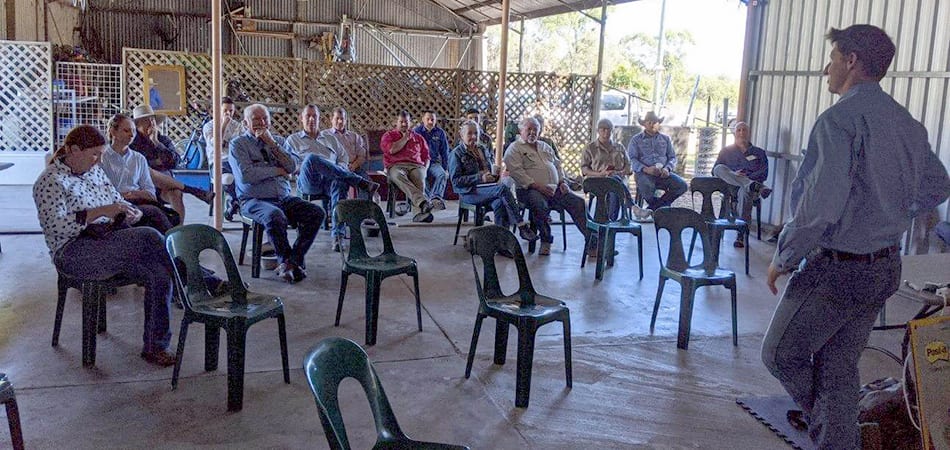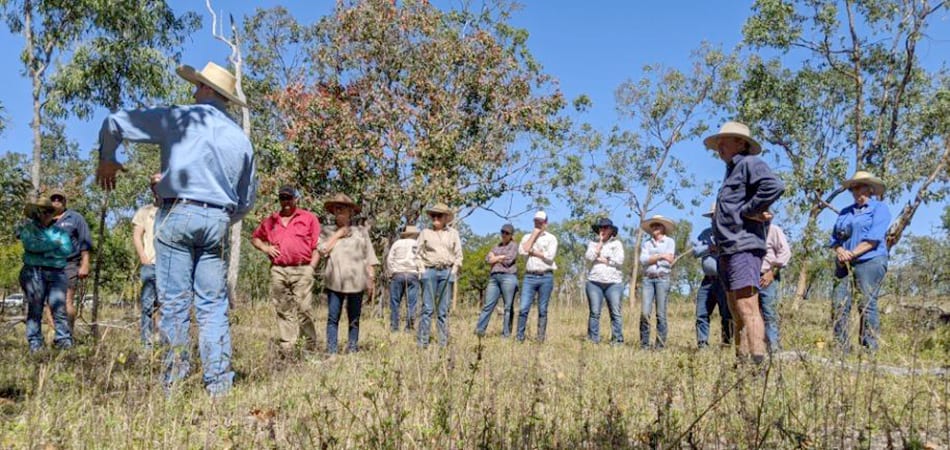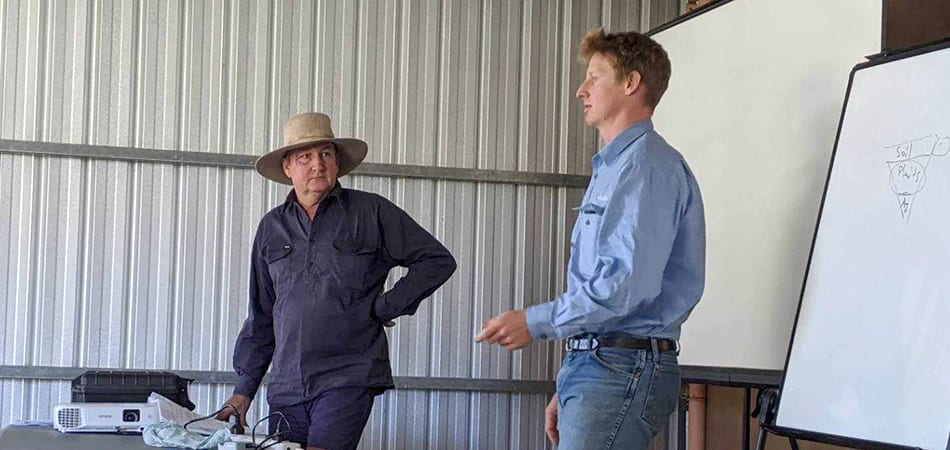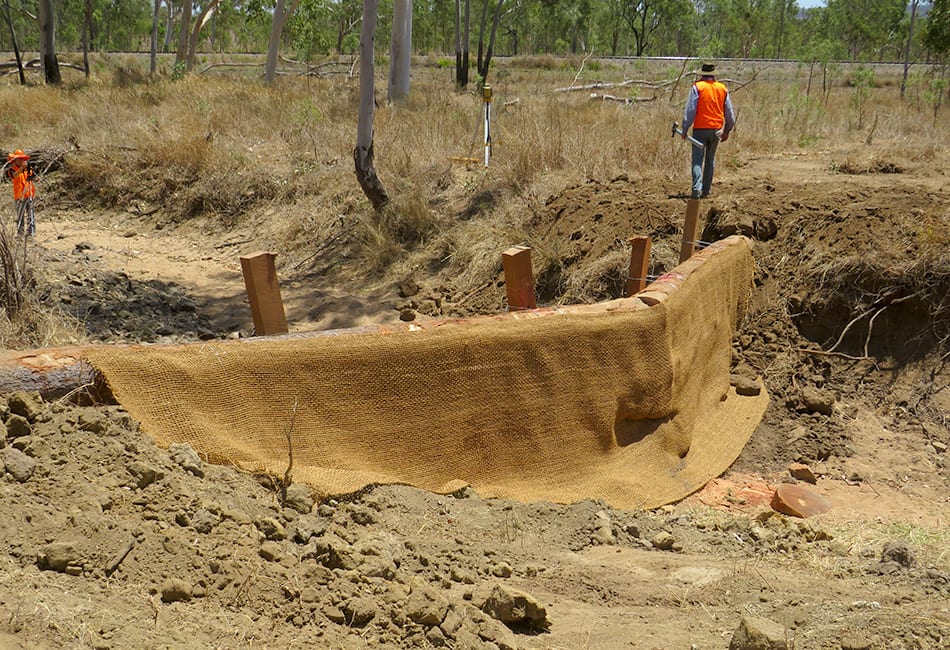
Rehydration focuses on soil as a sponge
LDC hosted a field day attended by more than 25 people, at Worona Station to showcase the work the LeFeuvre family has carried out to rehydrate their property.
Graziers were able to see first-hand how a producer has increased his water infiltration, reduced erosion and maximised pasture function. This was achieved by constructing a series of diversion banks, porous check dams and managing track drainage.
Land management techniques including a grazing management plan have also been introduced to combat erosion and to improve landscape function, ground cover and, ultimately, the productivity of the 6,677-hectare operation.
The aim of the field day was to show graziers examples of how moisture can be retained on their property, and to provide them with tools to help them work out the most cost-effective way of implementing a solution to problems like erosion in the landscape.
NQ Dry Tropics worked with the LeFeuvre family on the rehydration project which was funded through the Australian Government Reef Trust program under the Point Source Sediment project.
This ABC story on Worona is worth a read: Landscape rehydration on Worona.
Read more about the transformation at Worona Station here.
CEO of The Mulloon Institute Carolyn Hall made reference to the rehydration work carried out in partnership with NQ Dry Tropics during a recent information evening at the NSW Parliament which can be seen here.
Philosophy to keep, and use, ALL the rain received

LANDSCAPE Planner with The Mulloon Institute, Sam Skeat, was guest presenter.
His role was to provide advice in the context of landscape rehydration with a focus on balancing ecological return and business return when undertaking landscape rehydration projects.
Three principle topics were covered:
- key principles of landscape rehydration;
- practical on-ground interventions for graziers to take away to adapt and apply to their own landscape; and
- understanding how grazing management supports pastures and soils that hold moisture efficiently.
Here’s a snapshot of what Sam had to say.
“Graziers are wanting to know more about how to enhance surface and groundwater management for production and ecological goals,” he said.
“Part of that is learning how to read the landscape and to tap into the landscape’s natural system of self-rehydration. Hydration is the lifeblood for plants and animals.
“The key principles of landscape rehydration includes slowing rainfall runoff, increasing water infiltration into soil, increasing groundcover, plant density and regrowth, and restoring natural water movement patterns.
“I help graziers to identify the best on-ground strategy and works to remediate priority areas that need to be restored.
“This involves providing practical and hands-on information so graziers can go away with a clear sense of suitable action they can take to slow water movement and increase stable hydration on their property.
“This can be done through myriad methods including diversion banks, leaky weirs and spreader structures.
“It is then critical to introduce a grazing management plan to get the most out of your pastures.
“Graziers need to organise their grazing to deal with the complex and dynamic nature of their property systems. Often this involves decisions which influence the effective utilisation of the available feed within, and between seasons, across the whole property.”
More than 20 people attended the workshop at Worona Station, Reid River.
Sam Skeat from Mulloon Institute, who worked with the LeFeuvre family on the rehydration project, explained what gully erosion remediation works were carried out, and how cattle are being used as a tool to regenerate the grassland.
Keeping water on the land a key goal of the LDC project
LANDSCAPE rehydration initiatives underpin a number of NQ Dry Tropics activities that are being carried out in the BBB catchment area.
A demonstration site and learning hub at Mt Pleasant Station, Bowen, is trialing how regenerative agriculture practices can restore landscape function in a production grazing landscape.
The design is based on natural sequence farming principles and was designed and supervised by the Mulloon Institute.
LDC has promoted the rehydration work of the Mulloon Institute that uses the principles of Peter Andrews and ‘Natural Sequence Farming’ which target on-ground works to reduce erosion and increase rehydration of the land.
There’s more information on the hub available here.




